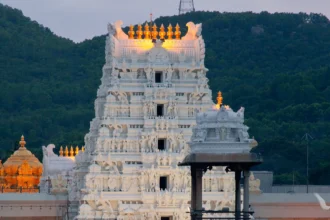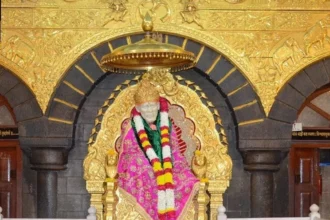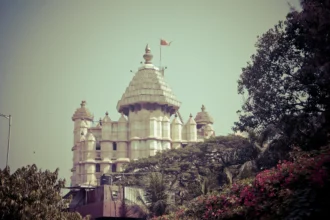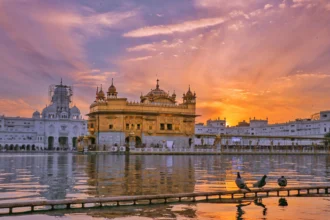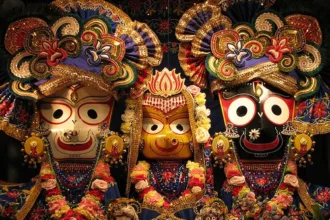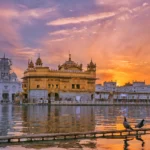Nestled on the sacred shores of the Bay of Bengal, the Shree Jagannath Temple in Puri, Odisha is far more than a centuries-old monument, it’s a living soul, pulsing with divine energy, intricate rituals, and mysteries that defy explanation. Join me on a journey that weaves history, emotion, spirituality, and rare stories that few know.
Origins: From Ancient Legend to 12th-Century Marvel
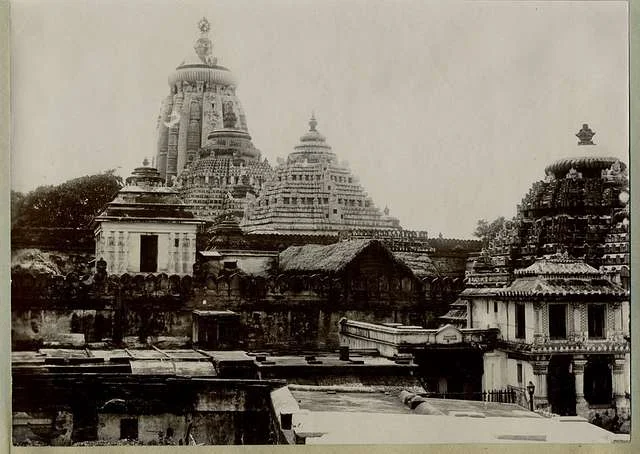
Legend credits King Indradyumna with establishing the shrine nearly 2,000 years ago, following visions of Lord Jagannath, a form of Lord Vishnu. The present temple was constructed c. 1161 CE under King Anantavarman Chodaganga Deva, whose ambition was to create a Vaishnava temple unrivaled in grandeur.
But earlier texts—Rig Veda, Mahabharata—refer to a wooden log resembling Jagannath, believed to have floated from the sea—a symbolic “Daru”—and unearthed for worship. In this blend of myth and history lies the temple’s heart.
Architecture: Divine Scale & Symbolism
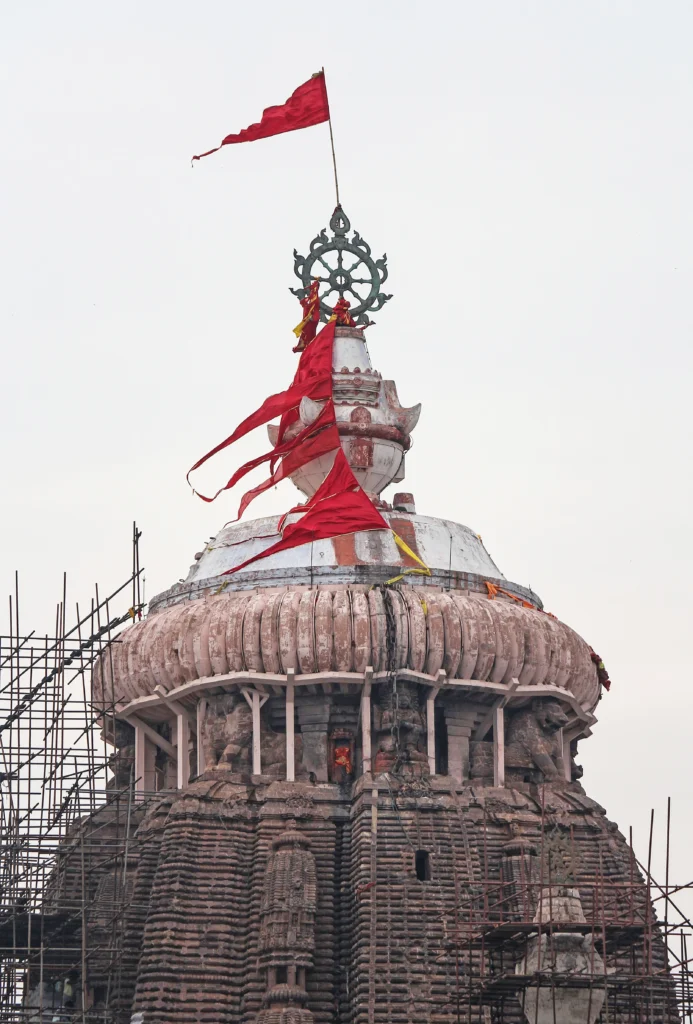
Jagannath temple is a masterpiece of Kalinga architecture, featuring a soaring shikhara (spire) towering 65 m (–a full‐size skyscraper for the 12th century) .
- No iron used: Built entirely of interlocking stone, it resists coastal wear .
- Aruna Stambha: A 34-ft mystical pillar topped with the Sun’s charioteer, relocated from Konark.
- No shadow: Despite its height, the temple casts no shadow at any time—an architectural marvel.
- Silent sea effect: Inside, the roar of the Bay disappears—outside, it returns. Architectural acoustics or divine sign?
Idols: Divine Wood with Cosmic Mystery
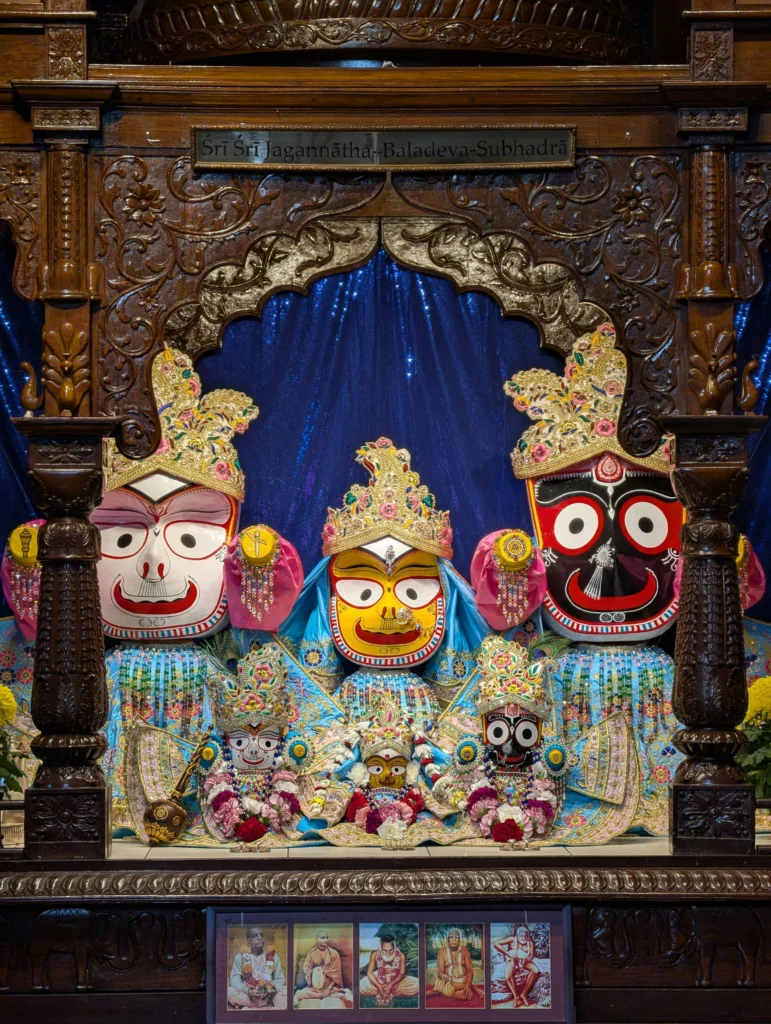
Jagannath, his brother Balabhadra, and sister Subhadra are carved from holy neem logs. Their unusual forms—circular eyes, missing limbs—aren’t defects but Divine symbols: universal omnipresence beyond worldly form.
Every 12–19 years, during Nabakalebara, new idols are carved; their divine essence (Brahma Padartha) is transferred in secret, with priests blindfolded, in complete darkness. Only a handful of Sevayats know the process—revealing it is forbidden.
Spiritual Pulse & Pilgrimage Significance
Puri is one of the revered Char Dhams—alongside Badrinath, Dwarka, and Rameshwaram—symbolizing liberation and spiritual rebirth.
Saints Chaitanya Mahaprabhu and Adi Shankaracharya graced its corridors, drawing millions in a timeless thread of devotion. Here, faith transcends caste, creed, or social standing—Mahaprasad is shared equally.
Mahaprasad & Rosaghara: Miracles in Clay Pots
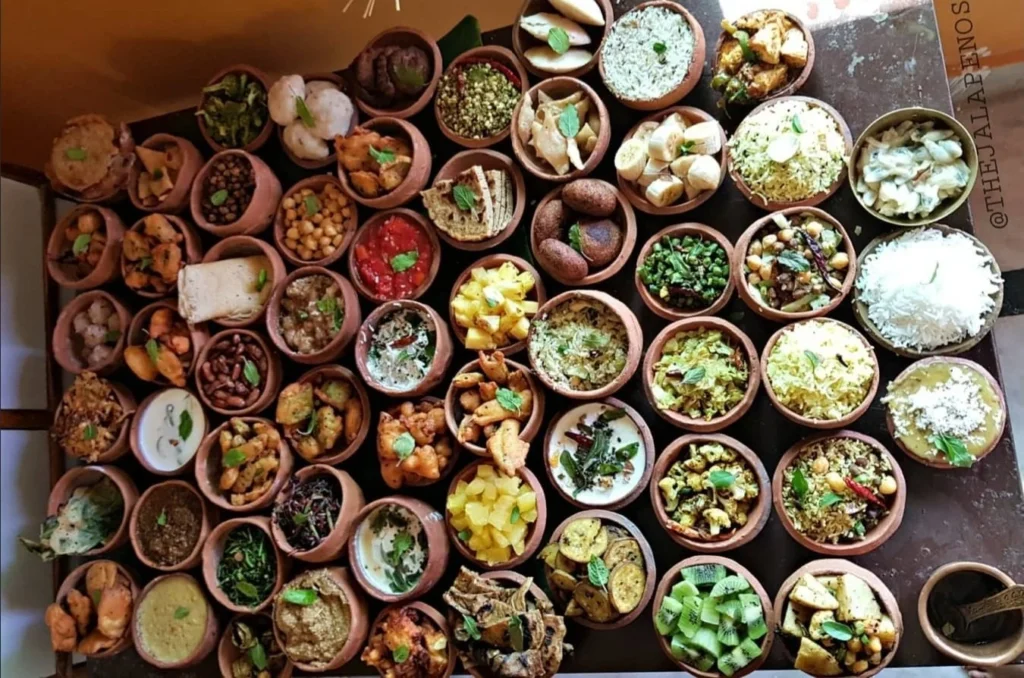
The temple’s kitchen, Rosaghara, is among the world’s largest. Sentinels called Suaras daily prepare 56+ food items, cooking them in seven stacked clay pots. Miraculously, the top pot cooks first, and food never runs out nor spoils—no matter how many devotees come.
The unique offerings—meatless, onion-less—are served at Ananda Bazaar, where everyone eats together, mirroring heaven’s egalitarian spirit.
Mysteries That Stir the Soul
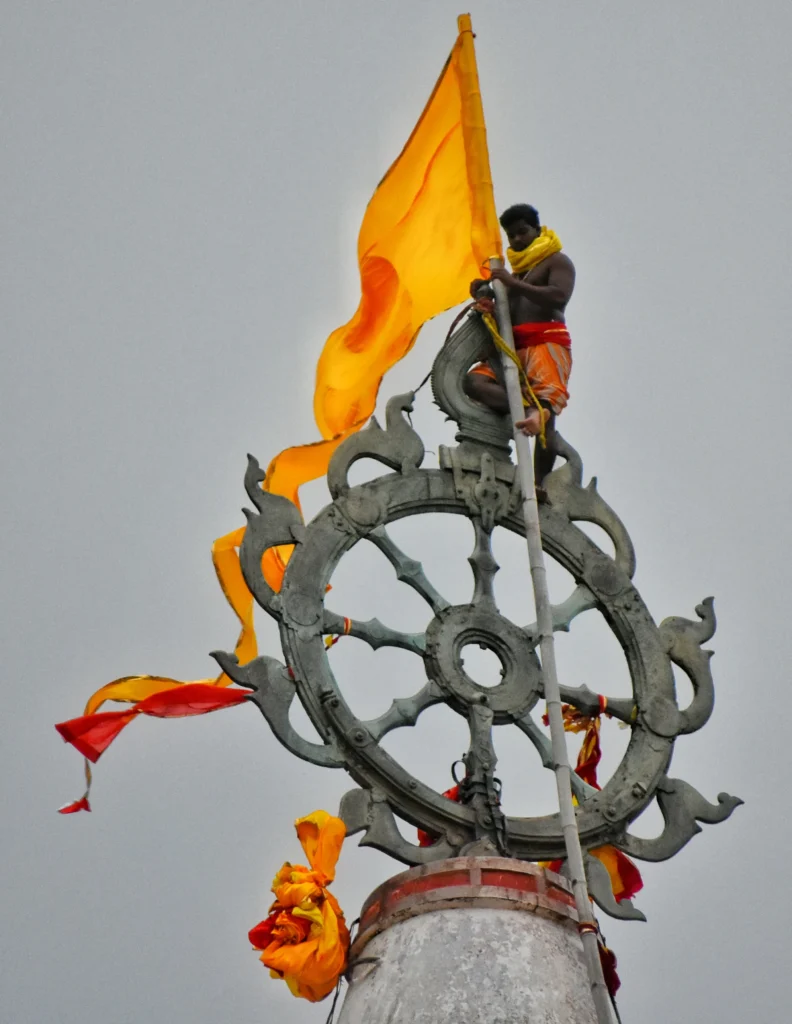
- Opposite flag: The temple flag flies against the wind every day. Changing it is a priest’s barefoot journey up 214 ft, unbroken for 800+ years.
- Sudarshan Chakra illusion: This iron discus seems to face you from any vantage—magical optics or craftsmanship?
- Reverse breeze: The wind reverses direction compared to normal coastal patterns—nature or divine?
- Buried idols: Removed idols decompose under layers of earth—mystical recycling of the divine physical form.
Lesser Known Facts and Hidden Stories of the Shree Jagannath Temple
1. The Neem Tree That Finds You
For the Nabakalebara ritual—when the idols of Lord Jagannath, Balabhadra, and Subhadra are replaced—the search for the sacred neem trees (known as Daru Brahma) is not random. The trees reveal themselves through ancient signs:
- Must have no bird nests
- One of the tree’s branches must resemble a conch (shankha) or chakra
- There must be a snake guarding it, a nearby temple, and a creeper wrapping around it like a sacred thread
These trees are said to be chosen by the divine, and once found, a secretive ritual—accompanied by mantras, tribal traditions, and deep silence—is performed to retrieve them. It can take months to find the right tree, and only a few select Daitapatis (priests from a specific lineage) are allowed to participate.
2. The Fire That Never Dies
Deep inside the temple kitchens burns a sacred fire called the “Vaishnava Agni”. It is believed that this fire has never been extinguished for centuries.
It is passed down generation after generation, and all food is cooked over this flame—even today, without modern cooking devices. If this flame were to die, it is said the temple would close until it is ritually reignited through ancient Vedic practices.
3. Lord Jagannath’s “Missing Hands” Are Not a Flaw
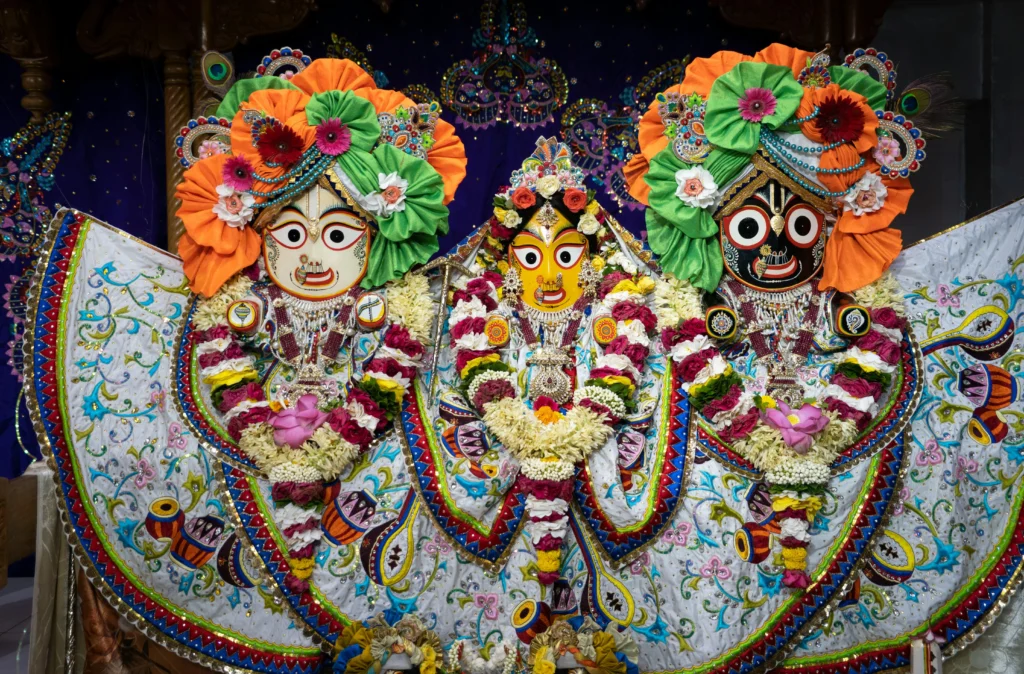
The idols of Lord Jagannath and Balabhadra are incomplete—they have no arms. While many say it is because the sculptor Vishwakarma left the idols unfinished, there’s a deeper truth:
Lord Jagannath doesn’t need arms to embrace the universe.
His form is inclusive of all beings—without specifics of caste, color, or shape. This “incomplete” image is actually perfect in divine terms—representing the formless, boundless energy of the cosmos.
4. Lord Jagannath “Catches a Fever”
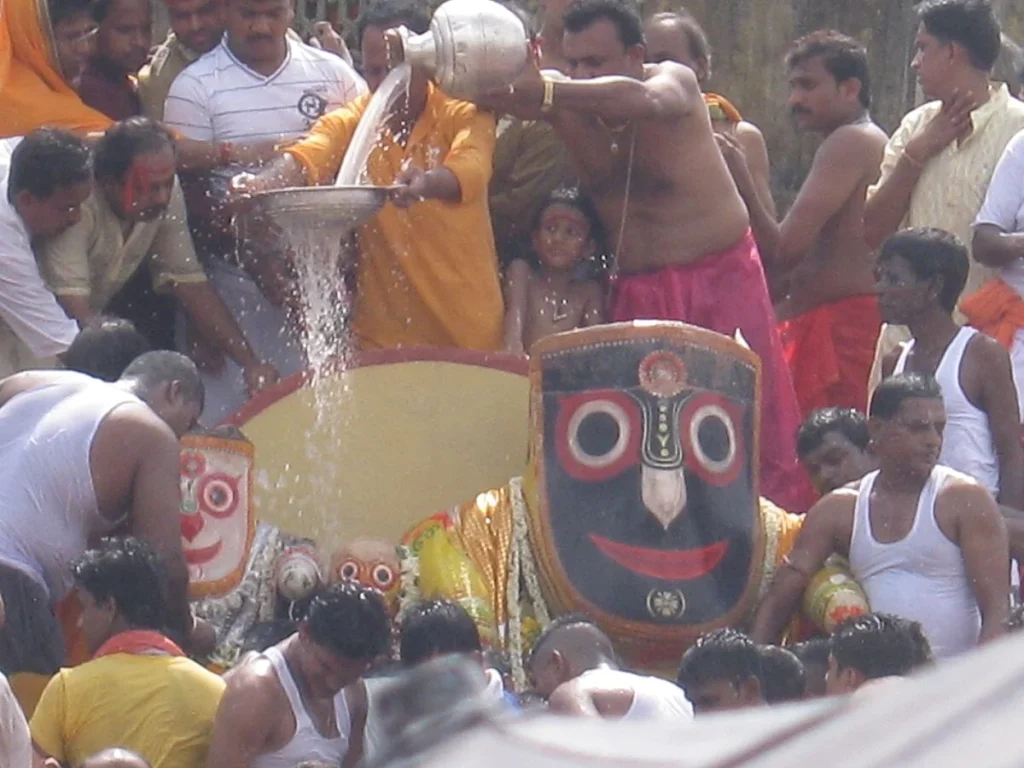
After Snana Yatra (ceremonial bathing with 108 pots of water), the deities are said to fall ill. They are hidden away in a secluded chamber known as the Anavasara Ghar for 15 days. No one is allowed to see them. During this time, no temple darshan is allowed, and traditional herbal medicines are offered.
This rare belief—that the deity undergoes illness—makes Lord Jagannath more human, more relatable to devotees. Even God, in his infinite form, feels pain and heals, just like us.
5. The Secret Transfer of the Soul (Brahma Padartha)
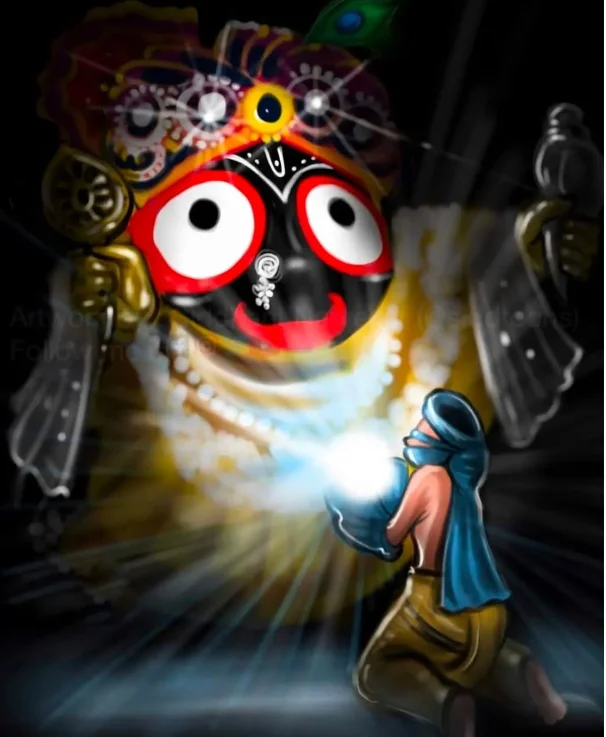
During Nabakalebara, the most mysterious part is the transfer of the Brahma Padartha—the sacred essence or “soul” from the old idol to the new. This happens only at midnight. The Daitapatis who perform the ritual are blindfolded, their hands wrapped in cloth, and they are forbidden from speaking about what they witness.
Some priests say they feel a glowing presence inside the idol. Some describe it as a pulse, others as an unseen warmth. After this ritual, many of them fast and isolate themselves, often weeping from the emotion they experience.
6. Birds and Planes Avoid the Temple Skies
There is a widely noted phenomenon: no birds fly above the Jagannath Temple. Also, aircraft are restricted from flying directly above the temple zone, even though no-fly zone declarations came much later. This mystery fuels the belief that a divine force protects the skies above Puri.
Many locals claim that any drone or camera trying to capture the temple top malfunctions mysteriously. Is it electromagnetic? Or is it faith? No one knows.
7. The Ocean’s Sound Disappears Inside the Temple
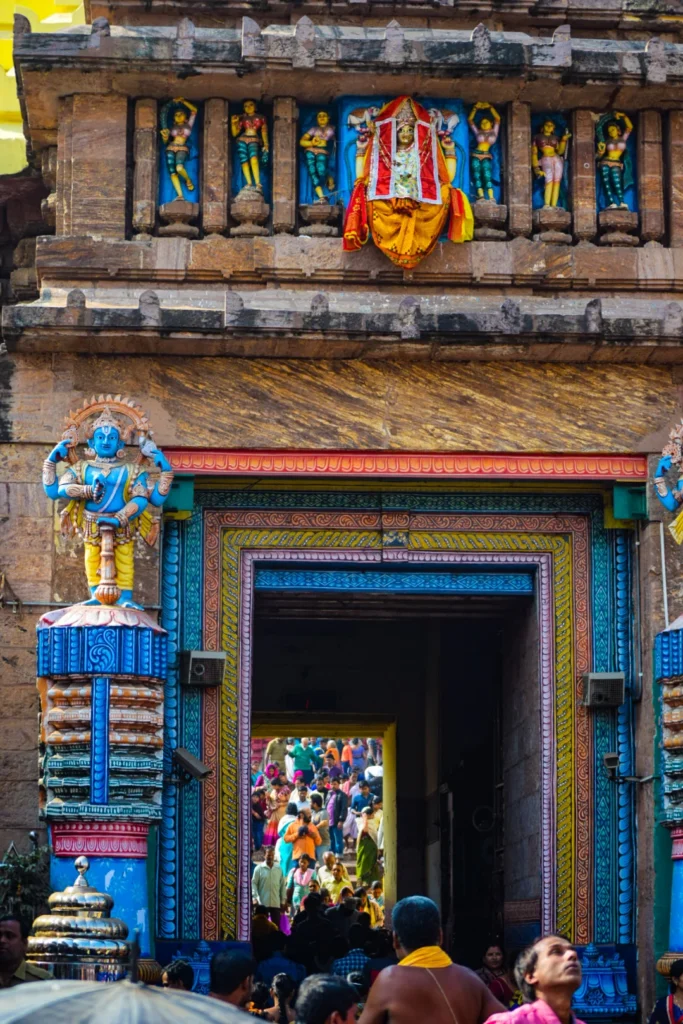
Despite the roaring proximity of the Bay of Bengal, you cannot hear ocean waves once you step through the temple’s main entrance, Singha Dwara. Step out again—and the waves return.
This isn’t just acoustics—locals say it reflects a spiritual teaching: when you enter Jagannath’s abode, the outside world disappears. All you hear is silence and God.
8. The Ritual That Ends the Day
Every night, after the final rituals, a sweet called “Pahili Bhoga” is offered, and Lord Jagannath is said to “go to sleep.” Priests sing lullabies, and small golden deities are laid beside the main idols as symbolic resting companions.
This gesture—of treating God like a child or family member—is rare. It evokes deep emotion: the Divine is not distant, but your kin.
9. The Universal Embrace of Jagannath
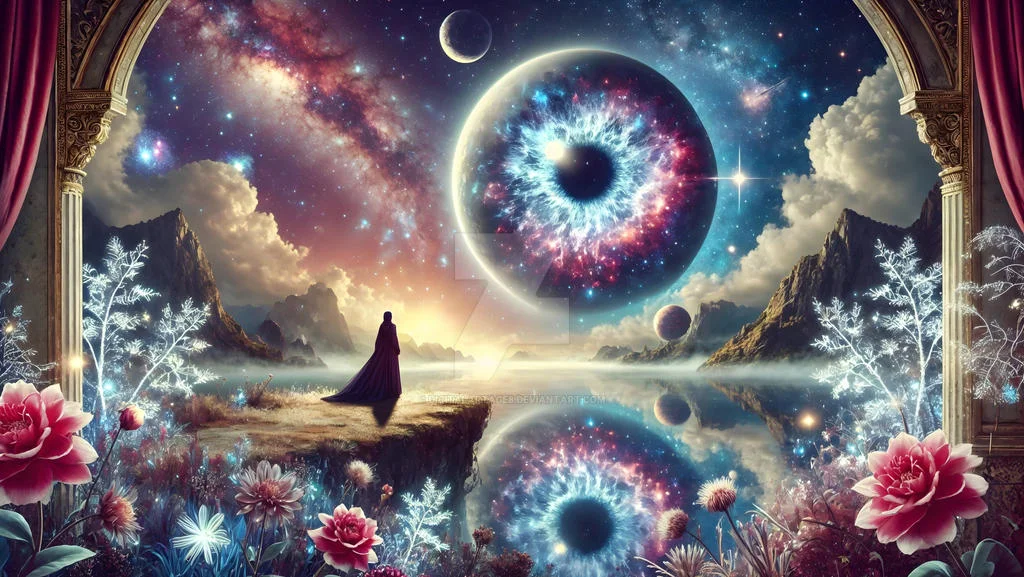
Lord Jagannath’s form is universal. His eyes are round and all-seeing—symbolizing no judgment. Skin is black (Jagannath), white (Balabhadra), and yellow (Subhadra)—symbolizing all races. His lack of limbs means He belongs to everyone and is beyond all forms.
People say He’s the only Hindu deity who truly represents humanity in all its diversity, and perhaps this is why millions from all castes and classes are drawn to Him.
10. No Architect Knows How the Jagannath Temple Was Built
There are no blueprints of the original temple structure. Despite its complex engineering—gravity-defying flag placement, echo-less inner sanctum, acoustics that mute the sea—there is no known ancient architectural documentation.
Historians and engineers have only theories, but many believe the temple was constructed with divine guidance, possibly using a mix of sound-based levitation and unknown ancient tools—a belief supported by some yogic and tantric texts.
Festivals: Timeless Celebrations of Faith
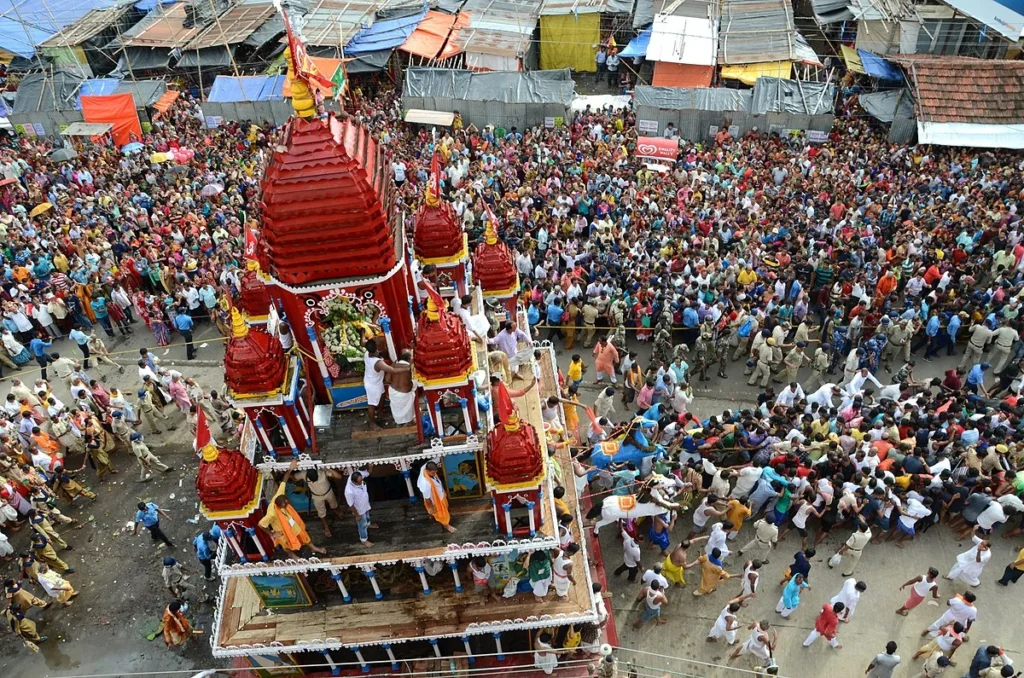
- Snana Yatra (June): Deities bathed with 108 pitchers of holy water from Sunakua well; they fall ill afterward and are hidden for 15 days—Anavasara.
- Ratha Yatra (June 27, 2025): The world-famous chariot festival. Nandighosa, Taladhwaja, and Darpadalana chariots glide through Grand Road to Gundicha Temple, pulled by millions; touching ropes gives divine merit.
- Debasnana, Hera Panchami, Niladri Bije and more: 12 grand festivals re-enact divine cycles of life, balance, and reunion.
Recent ritual builds: 70,000 sq ft of rice paste art adorned the Grand Road—alive with devotional artistry.
Dance, Culture & Art: Devotion in Motion
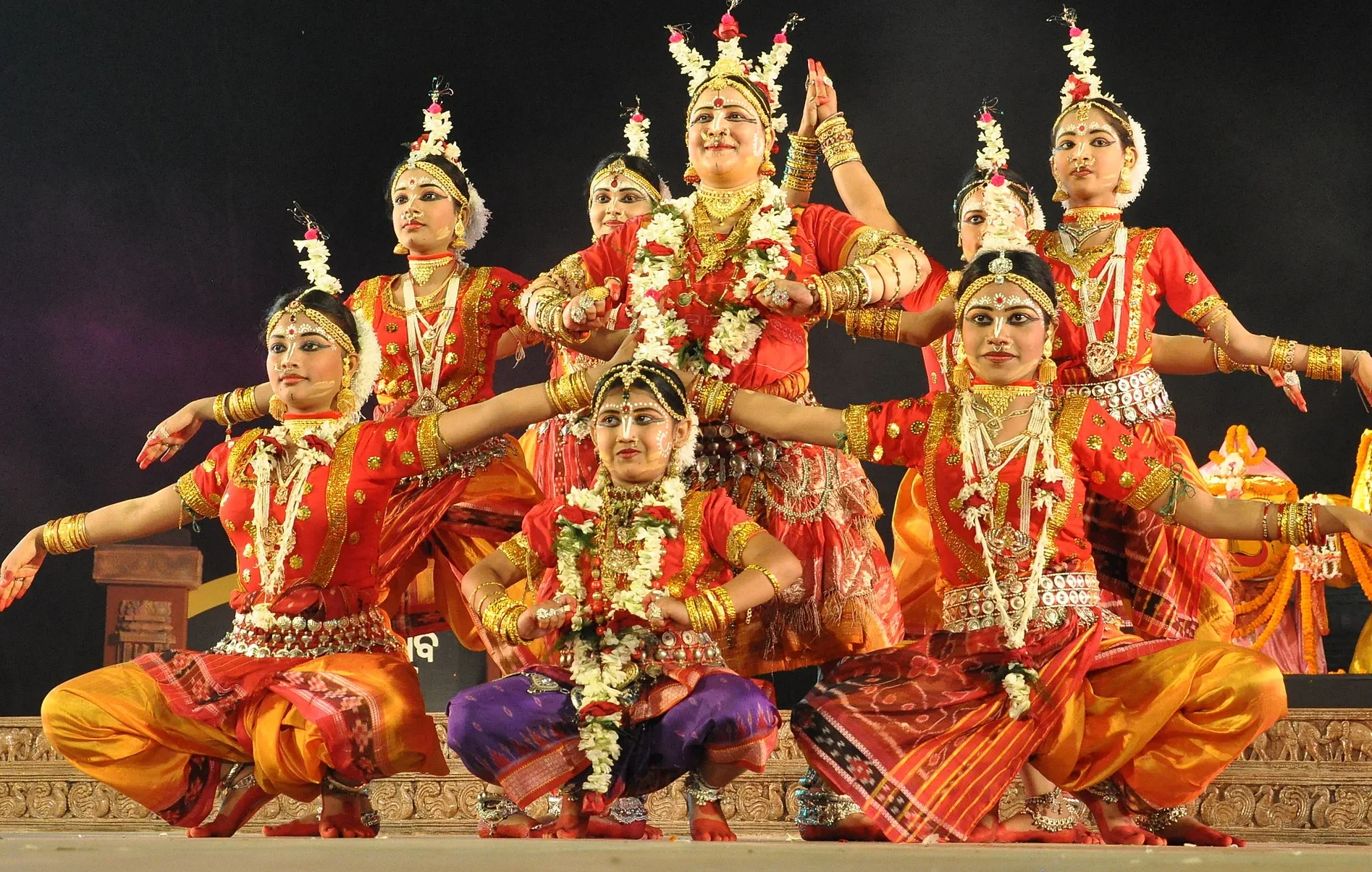
The Mahari dance, predecessor to Odissi, was once performed in the temple by devadasis, merging devotion and art. Although discontinued inside, its legacy lives on across Odisha.
Meanwhile, locals paint Pattachitra art, craft idols, sweets, and stone carvings—all echoing the temple’s aesthetic tapestry.
Rare Gems: Secrets Few Know
- Brahma Padartha’s Secret: During Nabakalebara, priests transfer divine essence silently, in total obscurity. Those who glimpse it are said to die within a year.
- Buried neem logs: When old idols are replaced, the discarded wood is buried—including palm-prints intact.
- No iron in construction: The entire temple is mortar-free, yet timelessly standing.
- Muting the sea: The acoustic envelope within is engineered—or divine—silence.
Spiritual & Emotional Connection
Puri is more than a pilgrimage—it’s an inner awakening. Walking the food-scented lanes, hearing the conch chimes, we feel a deeper oneness. A mom offering rasagola to her child, a stranger sharing Mahaprasad—all woven together by unseen threads of divine community.
The silence inside, the flag’s defiance, the mysterious breeze—they all whisper: believe beyond reasoning.
Modern Touches, Ancient Heart
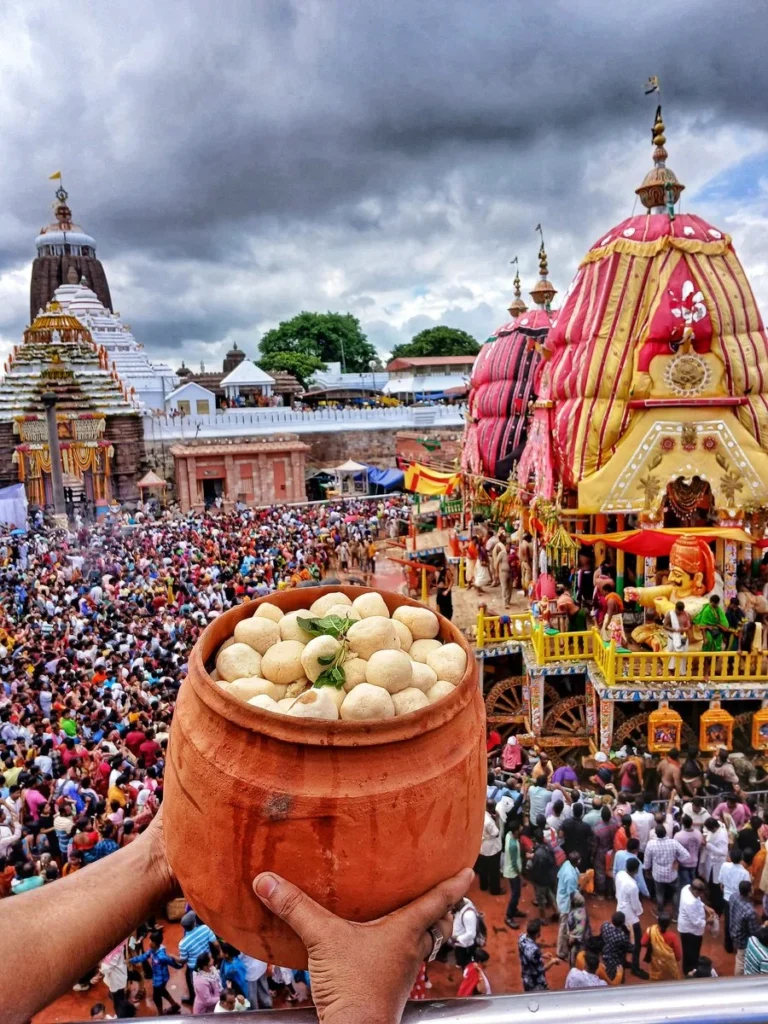
Despite modern times, the temple remains protected: no non-Hindus inside. But outside, the rituals have embraced tech: health monitoring during Jatra, floodlights for chariots, massive crowd control—innovation serving devotion.
The ongoing debate with West Bengal’s new Jagannath temple highlights Puri’s unique spiritual identity, claimed by Odisha since time immemorial.
And Rasagola Dibasa, celebrated after Niladri Bije, connects sweets to tradition: devotees offer sweets to Goddess Lakshmi post-Rath Yatra.
A Pilgrim’s Guide to the Sacred

- Best time: June-July (Purnima) for Rath Yatra & Snana Yatra.
- Darshan: Open 5:30 AM–9 PM daily; special seclusion days during Anavasara.
- Darshan rules: Only Hindus allowed inside; all others can circumambulate and participate in Ananda Bazaar.
- Don’t miss: Witnessing the flag change, experiencing Mahaprasad, hearing conch calls, exploring temple lanes.
Final Reflections
To the modern mind, these may sound like myths. But in Puri, every grain of sand, every conch sound, and every darshan is part of a timeless spiritual dance—where faith overrides logic, and love overrides fear.
Jagannath is not just a temple. He is:
- The childlike laugh of a devotee pulling a chariot
- The tender hand of a Suara serving Mahaprasad
- The salt in the sea air that forgets to roar near His feet
He is the God who forgets His form to become one with His people. The temple reminds us that to reach the divine, we don’t need perfection—just presence, love, and surrender.
So next time the wind seems to blow back from the Jagannath temple flag, or the chakra seems to follow your gaze—pause. That moment, that spine-tingle, is the temple whispering: You are part of something eternal.



